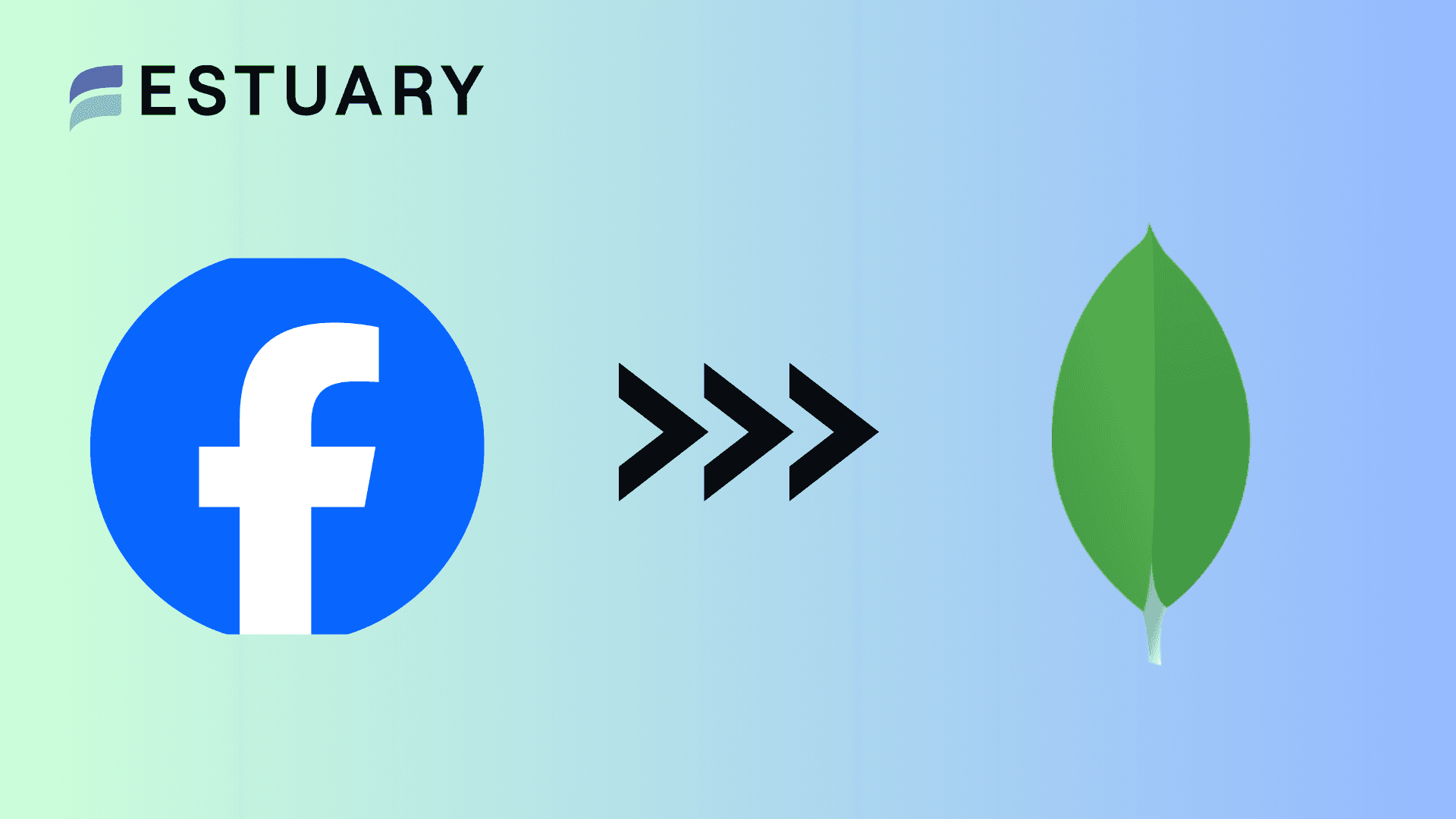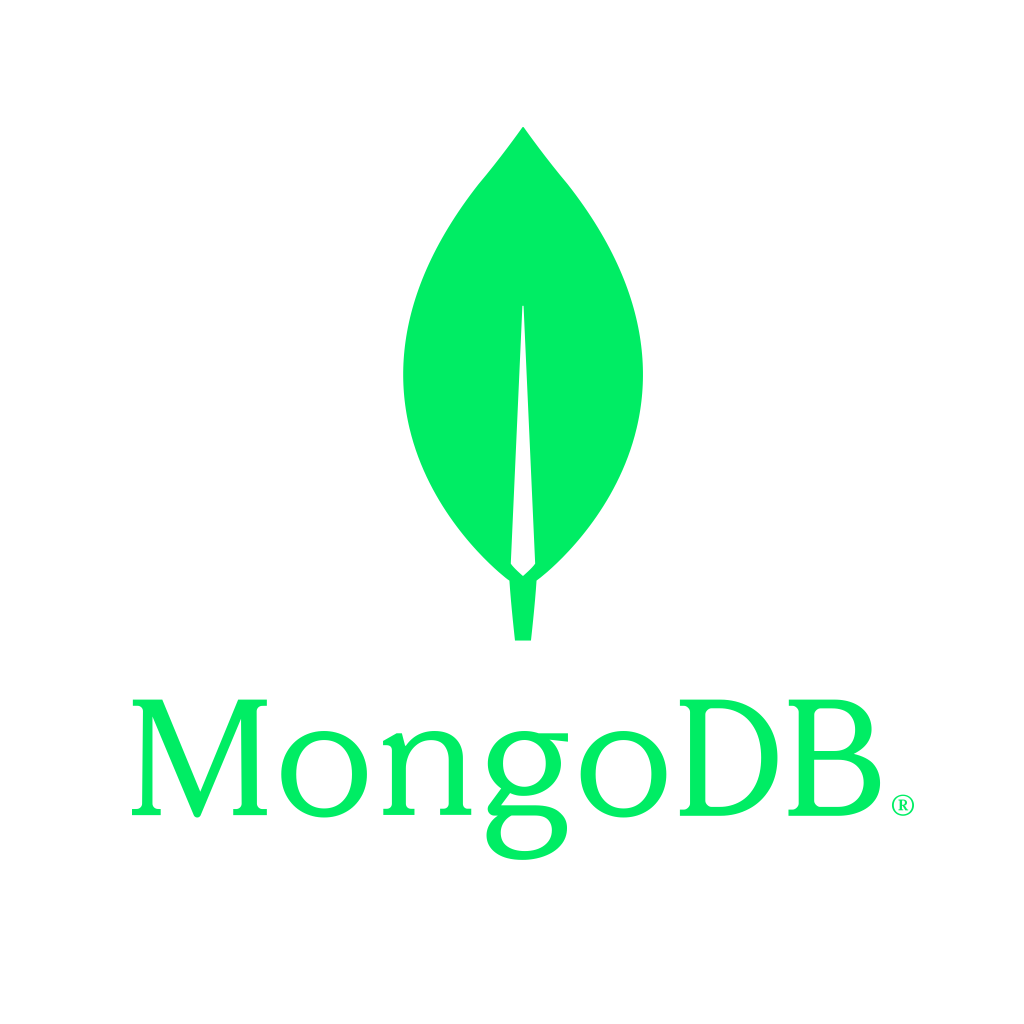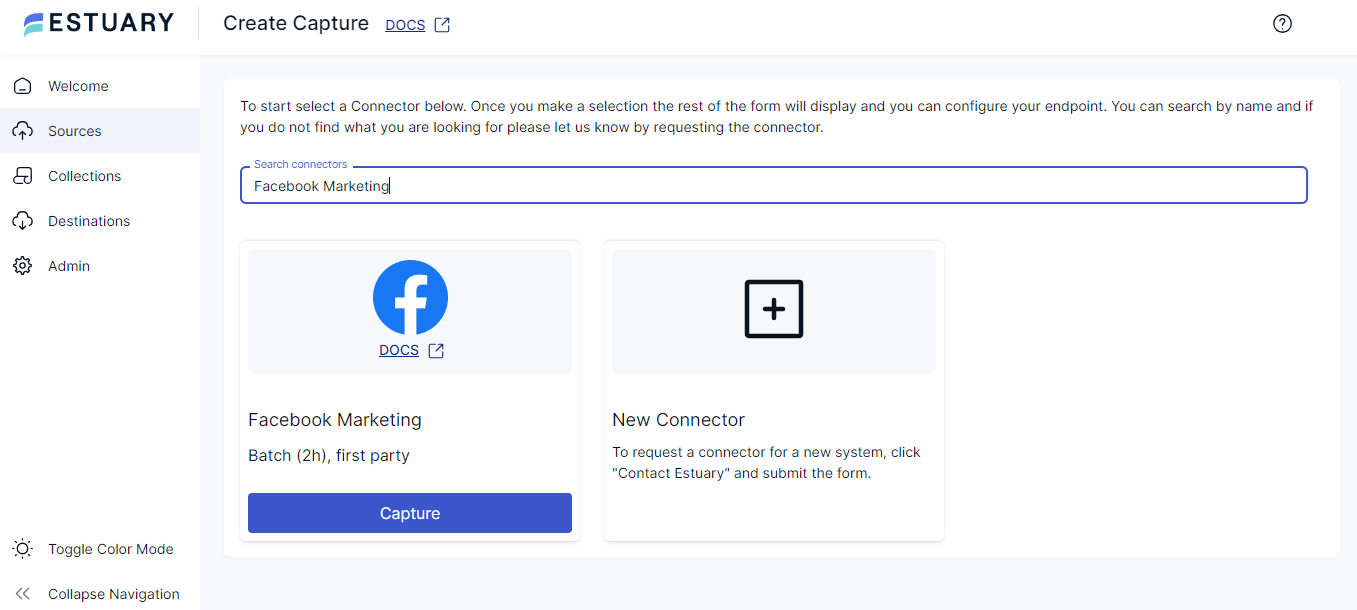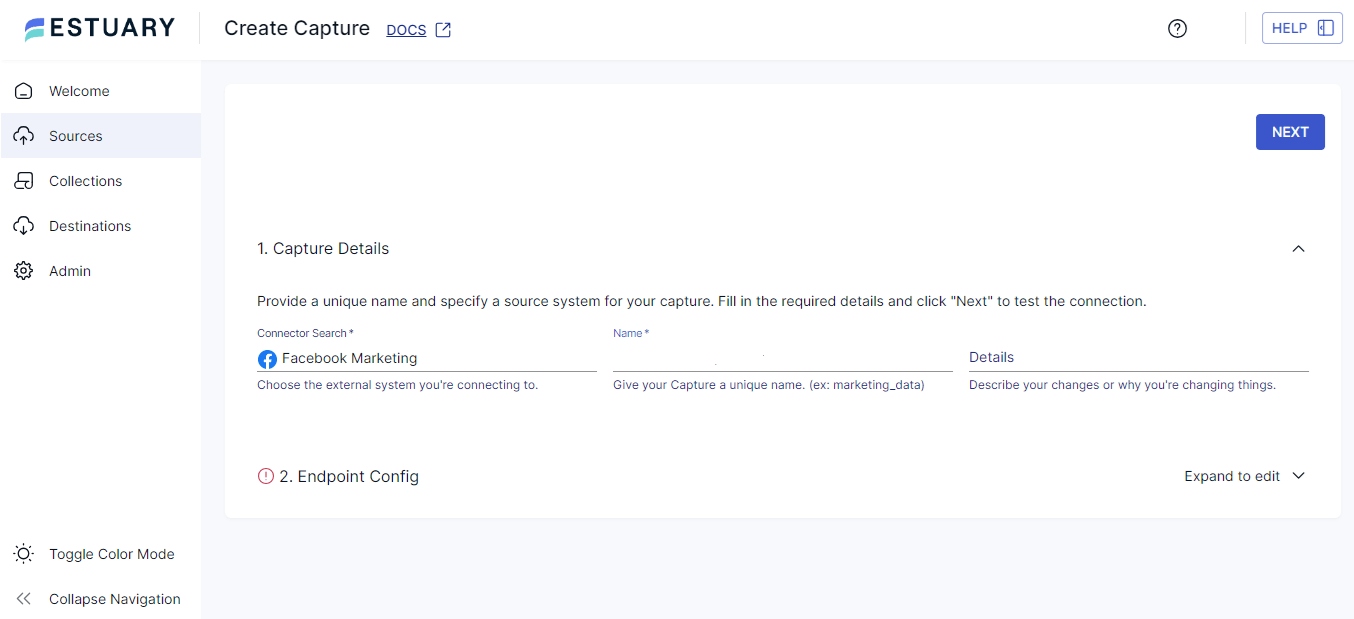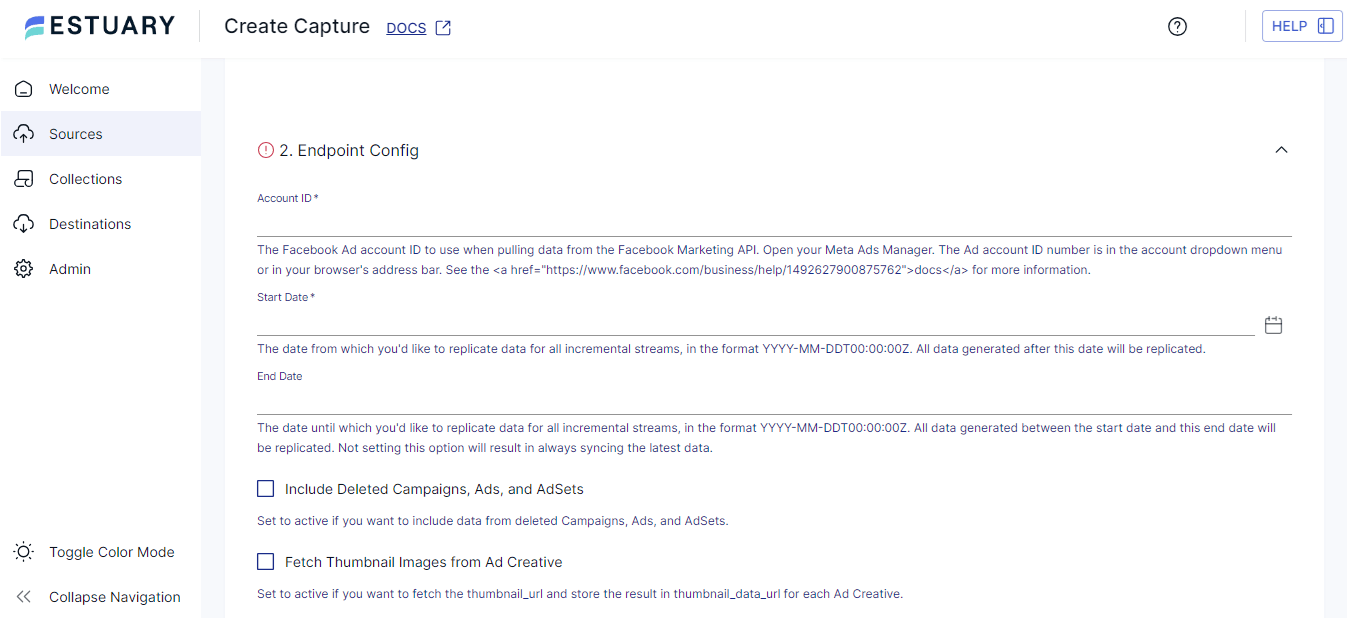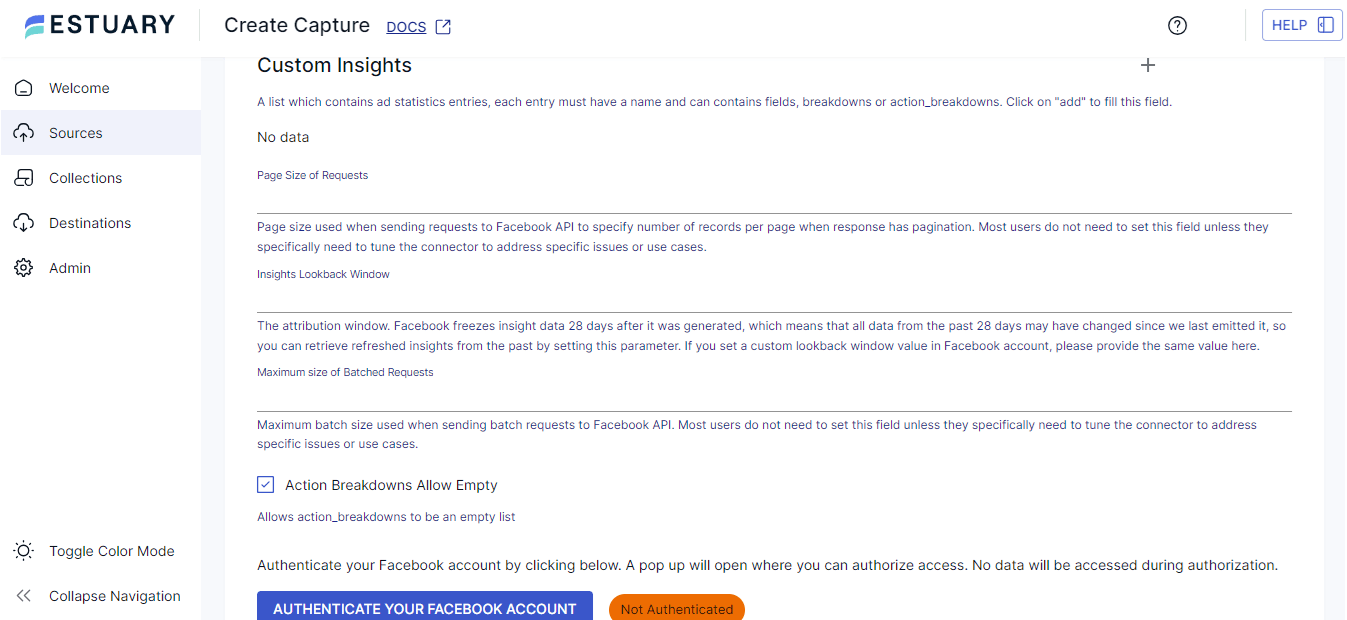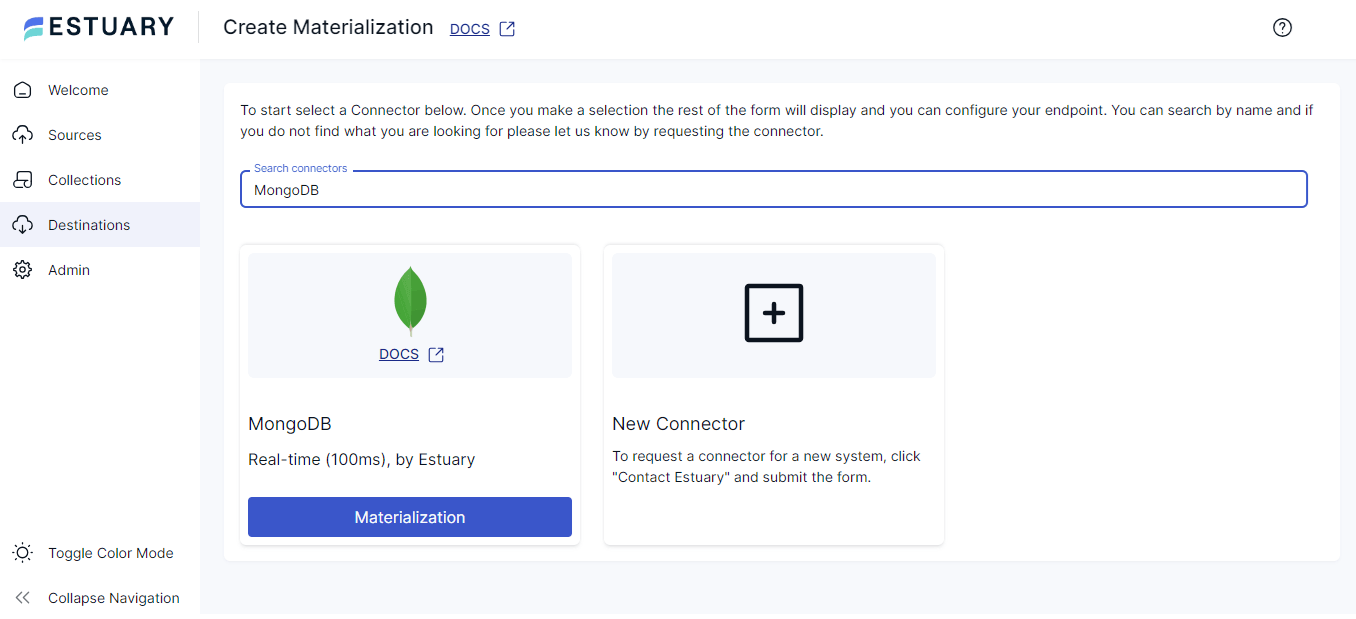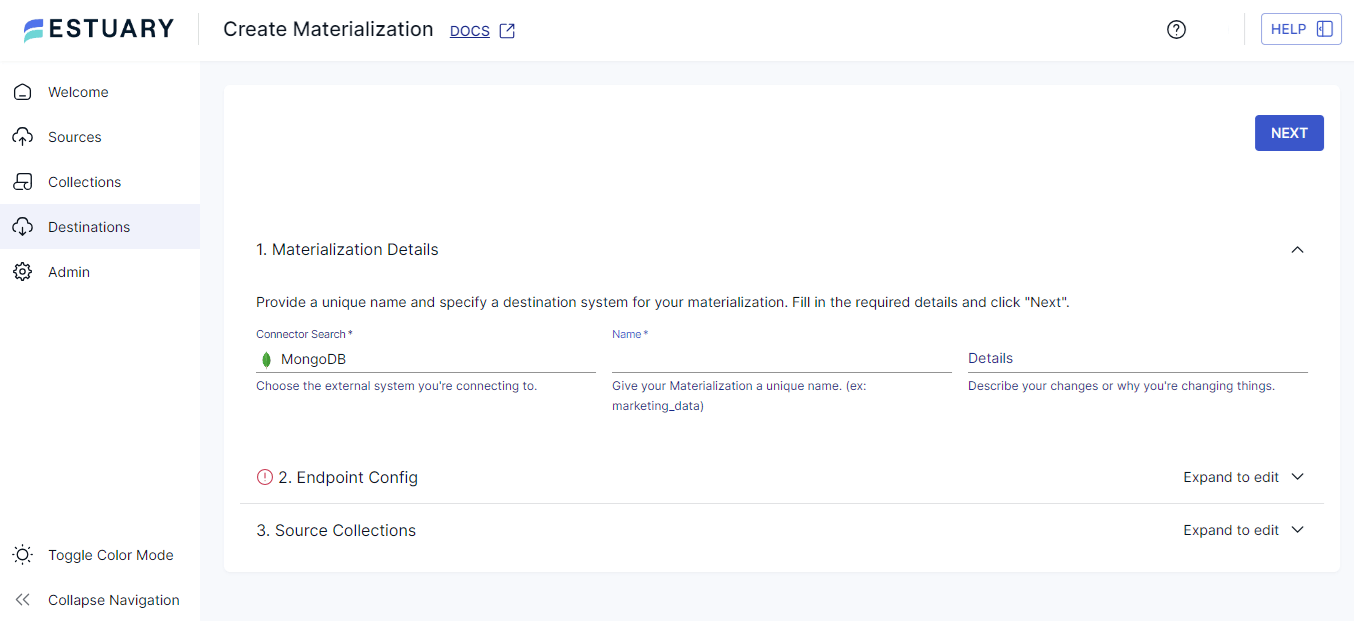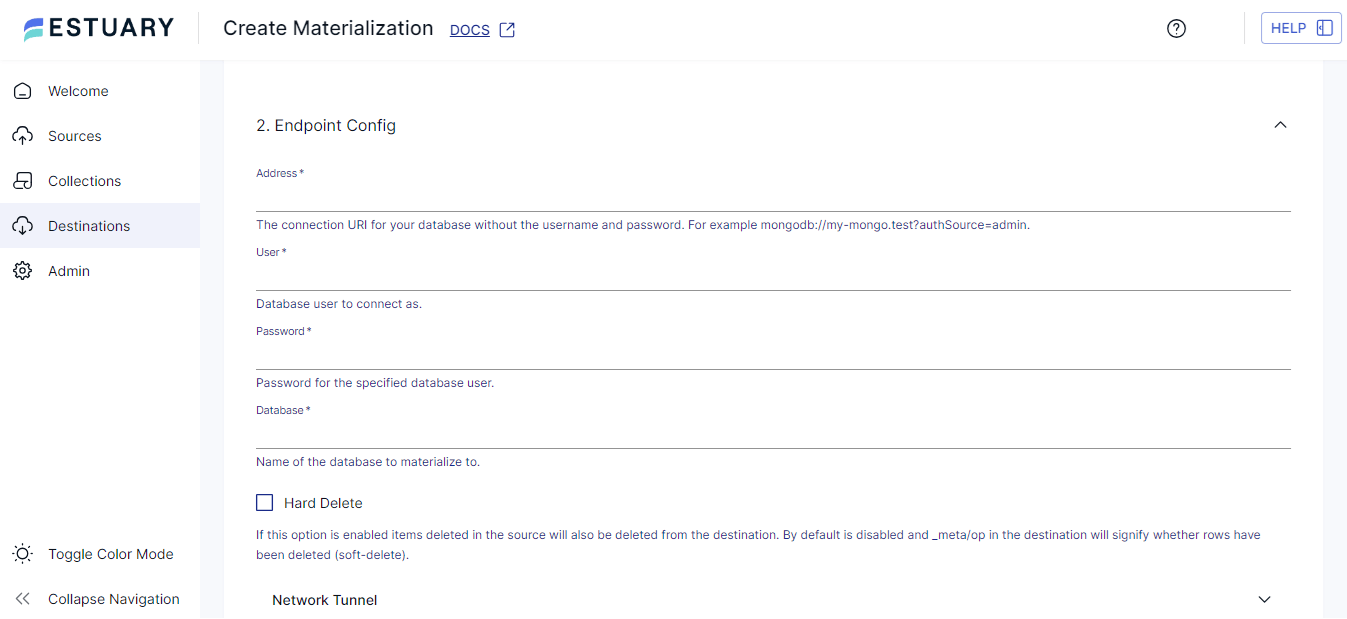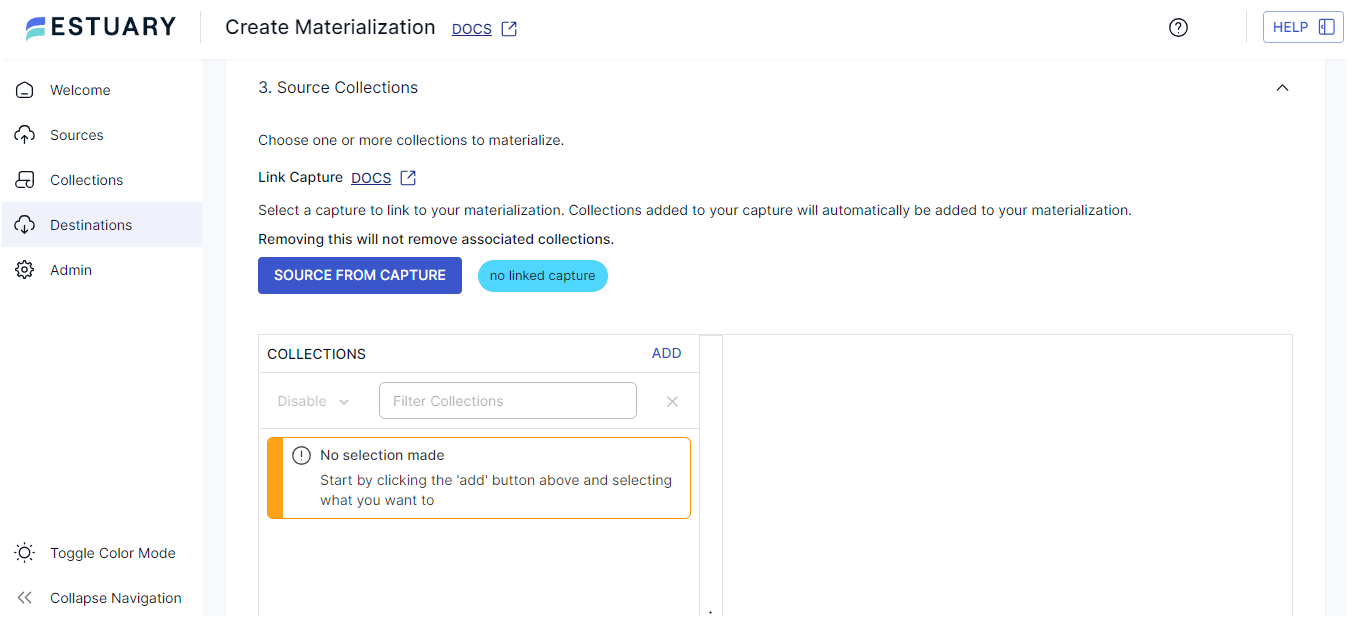
Effectively utilizing marketing data is crucial for businesses to understand consumer behavior and enhance their promotional strategies. Popular platforms like Facebook generate vast amounts of data from digital advertising. To extract valuable insights, it’s essential to manage this data efficiently.
Facebook Marketing is a helpful tool that can provide your business with detailed insights into user engagement, ad performance, and demographic information. However, to handle such large data volumes and perform advanced analytics, consider ingesting the Facebook Marketing API into MongoDB. Such an integration can help store and analyze your complex marketing data.
This article highlights two efficient methods to help you migrate data from Facebook Marketing to MongoDB.
If you’re already familiar with both Facebook Ads and MongoDB, jump down to the implementation methods.
Otherwise, we can quickly recap each of them.
Facebook Marketing - A Brief Overview
Facebook Marketing, a core component of Facebook's service offerings for businesses, is designed to promote your organization's products and services to targeted audiences. It encompasses a range of strategies, including text, images, videos, and live streams, to effectively engage and convert potential customers. These strategies allow your business to effectively reach its target audience. You can use Facebook Marketing to increase your online customer base and boost sales.
Facebook's advertising platform is structured into three main levels: campaigns, ad sets, and ads. Each level serves a specific purpose in the overall ad strategy, allowing businesses to create, manage, and optimize their advertising efforts effectively.
Campaigns:
Objective: At the highest level, a campaign defines the overall goal of the advertising effort. Objectives can include brand awareness, traffic, engagement, app installs, video views, lead generation, messages, conversions, catalog sales, and store visits.
Structure: Each campaign can contain multiple ad sets and ads, all working towards the same objective.
Ad Sets:
Targeting: Ad sets allow advertisers to define the target audience for their ads. This includes demographics (age, gender, location), interests, behaviors, and custom or lookalike audiences.
Budget and Schedule: Set daily or lifetime budgets and schedule when ads will be shown. Budget allocation can be optimized for specific outcomes, such as clicks or impressions.
Placement: Choose where ads will appear, such as in the Facebook News Feed, Instagram, Messenger, Audience Network, or across multiple platforms.
Bid Strategy: Define how much you're willing to pay for your desired outcome, whether it's impressions, clicks, or conversions. Facebook offers various bidding options like cost per click (CPC), cost per thousand impressions (CPM), or cost per action (CPA).
Ads:
Creative: At the ad level, you create the actual advertisement that users will see. This includes the format (e.g., image, video, carousel, slideshow), media (photos or videos), text, call-to-action buttons, and links.
Variations: Multiple ads can be created within a single ad set to test different creatives, headlines, or calls to action, allowing for A/B testing to determine the most effective ad variations.
Ad Copy: The ad's text, including headlines, descriptions, and any additional text, should be compelling and aligned with the campaign's objective.
The Facebook Marketing API allows developers to programmatically manage and optimize Facebook ad campaigns by providing endpoints for creating, updating, and retrieving ad-related data. It enables automation of advertising processes, real-time performance tracking, and detailed analysis of ad metrics to enhance campaign effectiveness.
Things you can do with the Facebook Marketing API:
- Real-Time Campaign Performance Monitoring: Continuously track the performance of ads in real-time by ingesting metrics such as impressions, clicks, conversions, and costs. This enables instant adjustments to optimize ad effectiveness and budget allocation.
- Ad Sets Optimization: Optimize ad sets based on performance metrics and adjust parameters to improve results. Redefine ad set parameters on the fly, including budget, schedule, targeting options (demographics, interests, behaviors), and bid strategy.
- Audience Segmentation and Targeting: Use detailed audience data to segment users based on demographics, interests, and behaviors. Store and act on this segmented data to refine targeting strategies and improve ad relevance.
- Conversion Path Analysis: Track and analyze the customer journey from ad interaction to conversion.
- Budget Optimization: Monitor and adjust ad spend in real-time by analyzing cost metrics and campaign performance. Automate budget reallocation to high-performing campaigns to maximize return on investment.
- Anomaly Detection: Detect unusual patterns or anomalies in ad performance, such as sudden drops in click-through rates or unexpected increases in cost-per-click.
- A/B Testing and Experimentation: Conduct A/B testing on different ad variations. Analyze the performance of each variation to determine the most effective strategies and optimize future campaigns.
MongoDB - A Brief Overview
MongoDB is an industry-leading developer data platform offering a NoSQL document-oriented database service. It helps you organize data into collections of documents, each storing the data in key-value pairs using the Binary JSON (BSON) format. This model supports multiple data types not found in traditional RDBMS databases like MySQL, Postgres, or SQL Server (Relational Database Management Systems), including geospatial, graph, and time series.
Mongo DB’s key feature is its flexible schema. This allows documents within the same collection to have dynamic structures that can change with each document, unlike relational databases which demand a fixed schema that is applied to all records. The flexibility enables your applications to evolve seamlessly over time without requiring constant database redesign.
There are additional features to MongoDB:
- Multi-document ACID Transactions: MongoDB combines the benefits of high-speed and flexibility with ACID properties to support complex operations across multiple documents within a single transaction. This helps ensure consistency across the database after executing a set of operations.
- Database Sharding: MongoDB employs sharding to enhance query performance and scalability. This technique involves splitting large datasets into smaller, manageable parts, known as shards, distributed across multiple servers. With each shard operating as an independent database, it allows MongoDB to scale horizontally and handle large data volumes with minimal downtime.
- Replication: MongoDB’s replication feature helps mitigate the risks of hardware failures or similar issues when data is stored on a single server. In MongoDB, data is copied across multiple servers, forming a replica set. It ensures high availability, disaster recovery, and backup.
Why Ingest from Facebook Marketing into MongoDB?
- Real-Time Ad Performance Tracking: MongoDB’s ability to handle high write loads and fast read access makes it ideal for real-time performance tracking of advertising campaigns. Its flexible schema allows for quick adjustments to ad strategies based on current impressions, clicks, conversions, and costs without the need for complex schema migrations.
- Dynamic Budget Allocation: MongoDB’s support for horizontal scaling and real-time data processing enables automatic adjustments of ad spend. This ensures budgets can be reallocated swiftly to high-performing campaigns or ad sets, maximizing ROI without the delays associated with traditional batch processing.
- Personalized Ad Recommendations: MongoDB’s capability to store and query diverse and unstructured data types, such as user interactions and preferences, facilitates the generation of personalized ad recommendations. Real-time updates and flexible schemas allow for immediate adaptation to changing user behavior, enhancing ad relevance and engagement.
- Anomaly Detection: MongoDB’s powerful querying capabilities and real-time analytics support rapid identification of unusual patterns or anomalies in ad performance data. Its flexibility in handling diverse datasets enables prompt action to address potential issues or capitalize on opportunities, maintaining optimal campaign performance.
Methods to Ingest Data from Facebook Marketing to MongoDB
Here are the two most efficient methods of transferring data from Facebook Marketing to MongoDB:
- Seamless, managed ingestion with Estuary Flow: Bring your Facebook data into MongoDB with Estuary flow.
- Manual Method: Using CSV Export/Import to load data from Facebook Marketing to MongoDB
Method 1: Using Estuary Flow to Migrate Data from Facebook Marketing to MongoDB
Estuary Flow is a low-code, real-time CDC solution that also supports batch ingestion for ETL pipelines. It allows data teams to move data from place-to-place with sub-second latency and at low cost.
Some of Estuary Flow’s Highlights:
- Change Data Capture (CDC): Our flagship feature, Estuary Flow supports CDC, which allows you to track and synchronize data changes in the source system and copy them to a target database in real-time. This is most commonly used for moving data out of transactional databases such as MySQL and Postgres and into analytics-focused data warehouses like Snowflake or Google BigQuery.
- No-code Configuration: Estuary Flow provides 200+ pre-built connectors to move data between different sources and destinations with sub-second latency. Anybody in your organization with the right credentials and 10 minutes of free time can start moving your data.
- Efficient Transformation: Estuary Flow supports transformations, called derivations, for streaming and batch pipelines using SQLite or TypeScript. This allows you to perform anything from simple remapping to complex, self-referential, and stateful transaction processing.
Let’s look at the detailed steps of using Estuary Flow to load data from Facebook Marketing to MongoDB.
Prerequisites
- A Facebook Marketing account with an API key
- A MongoDB instance with login credentials
- An Estuary account
Step 1: Configure Facebook Marketing as the Source
- Sign in to your Estuary Flow account (or sign up for our forever free tier, or start a 30-day trial of our Starter tier, which allows to add unlimited data sources
- To start configuring Facebook Marketing as a data source, click the Sources option in the left navigation pane of the Estuary Flow dashboard.
- Click the + NEW CAPTURE button on the Sources page.
- Search for the Facebook Marketing connector using the Search connectors field in the Create Capture page; click the connector’s Capture button.
- On the Create Capture configuration page, specify a unique Name for your capture in the Capture Details section.
- In the Endpoint Config section, specify your Account ID and desired Start Date. The Start Date indicates how far back you want to pull your marketing data.
- Configure the fields in the Custom Insights section. Then, click AUTHENTICATE YOUR FACEBOOK ACCOUNT to authorize access to your Facebook account.
- Finally, click NEXT > SAVE AND PUBLISH to complete the configuration.
The connector will capture data from the Facebook Marketing API into Flow collections.
Step 2: Configure MongoDB as the Destination
After a successful capture, a pop-up window will display the capture details. To configure MongoDB as the destination of your data pipeline, follow these steps:
- Click on MATERIALIZE COLLECTIONS in the pop-up window.
Alternatively, click the Destinations option on the left navigation pane of the Estuary Flow dashboard to configure MongoDB as the destination. Then, click + NEW MATERIALIZATION on the Destinations page.
- On the Create Materialization page, search for the MongoDB connector using the Search connectors field. Then, click the connector’s Materialization button.
- On the connector configuration page, specify a unique materialization Name.
- In the Endpoint Config section, provide details of the Address, User, Password, and Database. You can also specify the ssh Forwarding information in the Network Tunnel section.
- Flow collections added to your capture will be automatically included in your materialization. However, you can click the SOURCE FROM CAPTURE button in the Source Collections section to manually select a capture to link to your materialization.
- Finally, click NEXT > SAVE AND PUBLISH to materialize the Flow collections of your Facebook Marketing data into tables in your MongoDB database.
Method 2: Using CSV Export/Import to Load Data from Facebook Marketing to MongoDB
This method involves extracting data from Facebook Marketing in CSV format and loading it into MongoDB via the UI.
Step 1: Export Facebook Marketing Data as a CSV
Exporting Facebook Marketing data using Meta Ads Manager allows you to manage and analyze your advertising data on your own terms, including details about campaigns, ads, and ad sets.
- Log in to your Facebook account.
- Navigate to the Ads Manager and select More.
- Click the Export all button to download all of your marketing data at once.
Alternatively, you can export specific columns within campaigns, ad sets, or ads. Click the Customize export button for selective data export.
- Select Export selected to download the specified ad data as a CSV file. The file automatically downloads to your system.
For more information, read how to export data in Meta Ads Manager.
You can utilize the Facebook Marketing API to export the lead ads data in CSV format. To learn more about it, read the documentation for retrieving leads.
Step 2: Load the exported CSV into MongoDB
Before you begin, ensure the following prerequisites are in place:
- Install the current version of MongoDB on your local computer.
- Connect to your MongoDB instance and create a new database, if required.
Here are the steps to load the CSV file containing Facebook Marketing data to MongoDB:
- Open the command prompt or terminal on your local computer.
- Navigate to the bin directory of your MongoDB folder.
- Run the following mongoimport command to load CSV into MongoDB:
plaintextmongoimport --db <database_name> --collection <collection_name> --type csv --headerline --file path/filename.csvReplace the placeholders in the above code as follows:
- database_name with your MongoDB database name.
- collection_name with your collection name where the documents will be imported.
- path/filename with the actual path to your CSV file.
- You can verify the import by executing the following command:
plaintextdb.<collection_name>.find()Where, mycollection is the name of a specific collection in your database.
This command will import the data from the CSV file into the specified database and collection.
Limitations and of Manually Downloading CSVs from Facebook Marketing API and Loading into MongoDB via the UI
- Inefficient Campaign Performance Tracking: Manually uploading Facebook Ads data to MongoDB can lead to delays in tracking campaign performance. Real-time insights are crucial for making timely adjustments to ad strategies, but manual processes hinder this ability, causing potential missed opportunities for optimization.
- Delayed Budget Adjustments: Without automated processes, making quick budget adjustments based on real-time performance metrics becomes challenging. This delay can result in overspending on underperforming ads or missing out on scaling successful campaigns.
- Impaired Audience Targeting: Facebook Ads rely heavily on timely and accurate data for audience targeting. Manual uploads increase the risk of using outdated or incorrect data, which can lead to ineffective targeting and reduced ad performance.
- Reduced Efficiency in A/B Testing: A/B testing requires frequent and accurate data updates to measure the performance of different ad variations. Manual data handling slows down this process, making it difficult to quickly iterate and find the best-performing ads.
- Increased Operational Costs: The time and resources spent on manual data uploads could be better utilized in strategic initiatives. This inefficiency increases operational costs and reduces the overall productivity of the marketing and data teams.
Conclusion
Ingesting data from Facebook Marketing to MongoDB offers several benefits, including scalable storage and flexibility in handling non-conforming data structures. To perform this ingestion, you can use Estuary Flow or the CSV export/import method discussed above.
While manually exporting CSV’s may seem tempting due to it being “free”, once you factor in operational costs and the negative impacts to budget adjustments and campaign tracking caused by delayed reporting, it becomes quickly evident that you need a more robust solution if you have serious plans to scale your business. Estuary Flow offers an automated, out-of-the-box connector to ingest data from the Facebook Market API into MongoDB with a leading 2-hour refresh rate, making it an ideal choice for automating your Facebook Market API <> MongoDB ingestion.
Ready to instantly transfer data across different platforms? Register for your free Estuary account to get started!
FAQs
Is MongoDB suitable for handling large volumes of Facebook Marketing data?
Yes, MongoDB is designed to handle large datasets and offers scalability through sharding.
Is MongoDB better than a relational database?
Whether MongoDB is better than a relational database depends on the specific use case and requirements. MongoDB, as a NoSQL document-oriented database, offers flexibility, scalability, and ease of handling unstructured or semi-structured data, making it ideal for applications with evolving data schemas, high write loads, or large-scale distributed systems. Conversely, relational databases excel in scenarios requiring complex queries, transactions, and consistent data integrity due to their structured schema and support for ACID properties. The choice between MongoDB and a relational database should be based on the specific needs of the application, such as data complexity, query requirements, and scalability considerations.
Related Guides:

About the author
Dani is a data professional with a rich background in data engineering and real-time data platforms. At Estuary, Daniel focuses on promoting cutting-edge streaming solutions, helping to bridge the gap between technical innovation and developer adoption. With deep expertise in cloud-native and streaming technologies, Dani has successfully supported startups and enterprises in building robust data solutions.
Popular Articles





